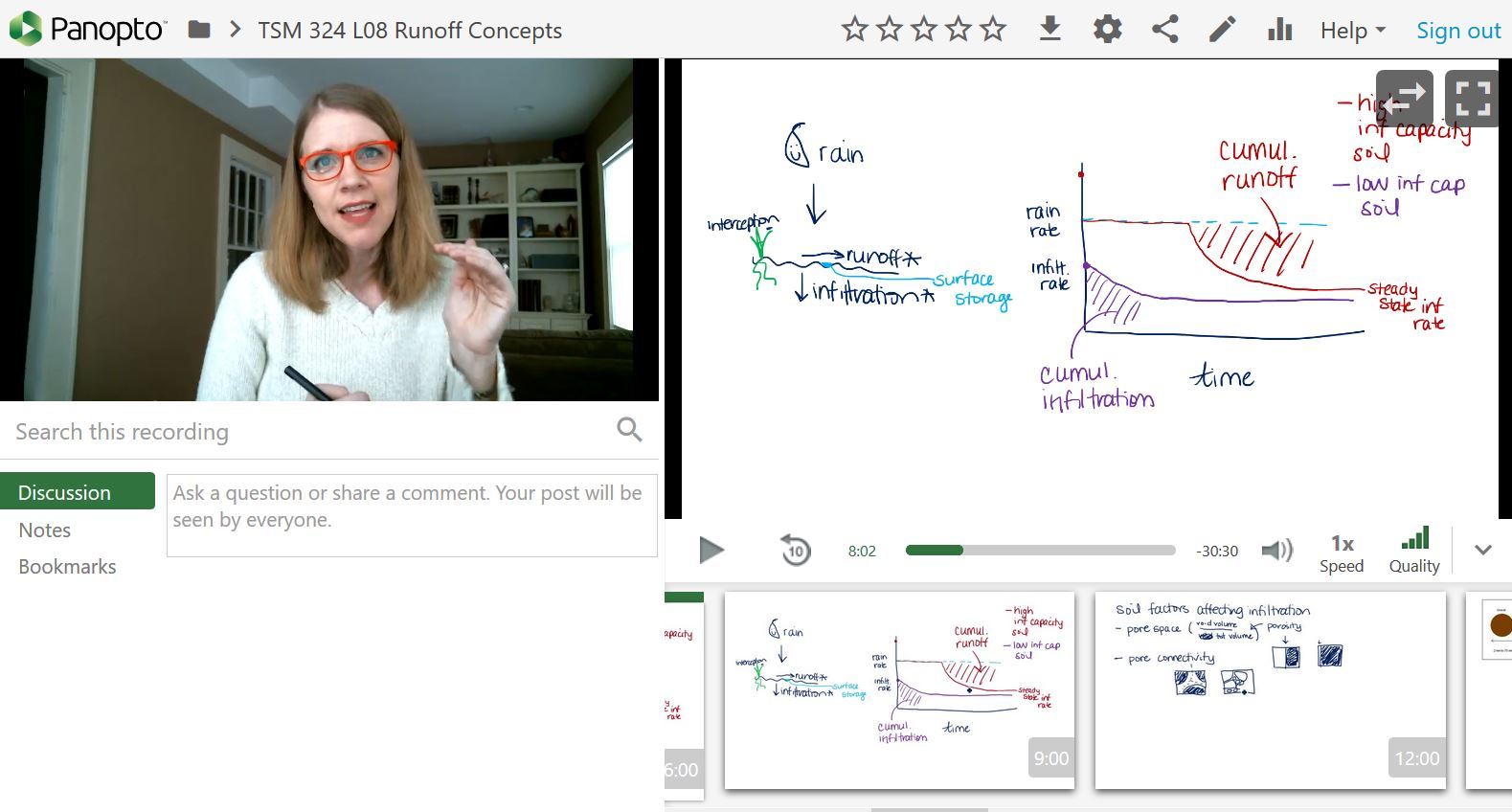
Amy Kaleita got her start with online instruction in 2007 while she was preparing for maternity leave. Now, she has a library of resources available to help as Iowa State University moves all instruction online. Image courtesy of Amy Kaleita. Larger image.
AMES, Iowa – The COVID-19 pandemic made it a necessity to shift all coursework online at Iowa State University with a little over a week to make the transition. Luckily, Amy Kaleita already had experience with the necessity of online instruction.
To be sure, the circumstances she’d dealt with in the past didn’t reach the same scale as the current pandemic. But, when the decision was announced on March 13 that all Iowa State courses would go online beginning March 23, Kaleita, a professor of agricultural and biosystems engineering, already had a library of resources at her fingertips and a wealth of experience to help her colleagues make the transition as well.
Kaleita got her start with teaching courses online in 2007 when she went on maternity leave in the middle of a semester. She filmed a series of lectures ahead of time, which were made available to her students online during her leave. She then had teaching assistants supplement the online lectures with question-and-answer sessions and other hands-on course materials.
After returning to work, she realized online instruction could prove valuable in a huge range of circumstances. For instance, making course materials available online 24/7 creates flexibility for students whose work schedules may sometimes conflict with class. Or it can free up students’ schedules if they want to attend job interviews.
In 2013, Kaleita and a colleague found the demand for one of their courses had grown beyond the capacity of the classroom assigned to the class, and a delay in enrolling in the course might have kept some students from graduating on time. Moving portions of the course online freed up room to allow more students into the course and keep them on track to graduate.
Helping colleagues
Her early introduction to online instruction meant she was up to the task when Iowa State announced all classes had to move online for the remainder of the spring semester. But Kaleita knew there might be other faculty who weren’t as comfortable with the teaching format. So she helped orchestrate a workshop with more than 30 other faculty in her department to prepare for the change.
The workshop went over the logistics of transitioning courses and the various resources available for online coursework. It was also an opportunity to get the entire department on the same page.
“In the early days of this transition, we were getting inundated with updates because things were changing so fast,” Kaleita said. “It was nice to get together as a group and look into each other’s eyes and say, ‘We can do this.’”
Keys to success
Kaleita offers three tips to faculty who may not be accustomed to online instruction. First, keep it simple. Many apps feature advanced “bells and whistles” to enhance courses, but Kaleita urged faculty to focus on the essentials first. Once faculty members have established a comfort level with online instruction, Kaleita said they can then experiment with the more advanced capabilities of the online instruction platforms.
Kaleita’s second key to success for online instruction is to stay flexible. Faculty should be ready to adjust their plans as dictated by the ongoing pandemic.
“This is a rapidly changing situation,” she said. “The plans we had a week ago might not work today.”
Finally, her third key to success is for faculty to work together to share best practices and pool their expertise as the entire university transitions to online instruction. She urged faculty to ask their colleagues about their experiences – what worked well and what didn’t – so everyone can benefit.
Kaleita said Iowa State had already embraced a wide range of online learning opportunities for students, laying a foundation for the remainder of this semester.
“I think we were in good shape for this,” she said. “We definitely aren’t starting from zero.”
Contacts
Amy Kaleita, Agricultural and Biosystems Engineering, 515-294-5165, kaleita@iastate.edu
Fred Love, News Service, 515-294-0704, fredlove@iastate.edu
Quick look
When the decision was made to move all classes online, Amy Kaleita had a wealth of material and experience to rely on. And she helped her colleagues make the transition as well.
Quote
“I think we were in good shape for this. We definitely aren’t starting from zero.”
Amy Kaleita, professor of agricultural and biosystems engineering